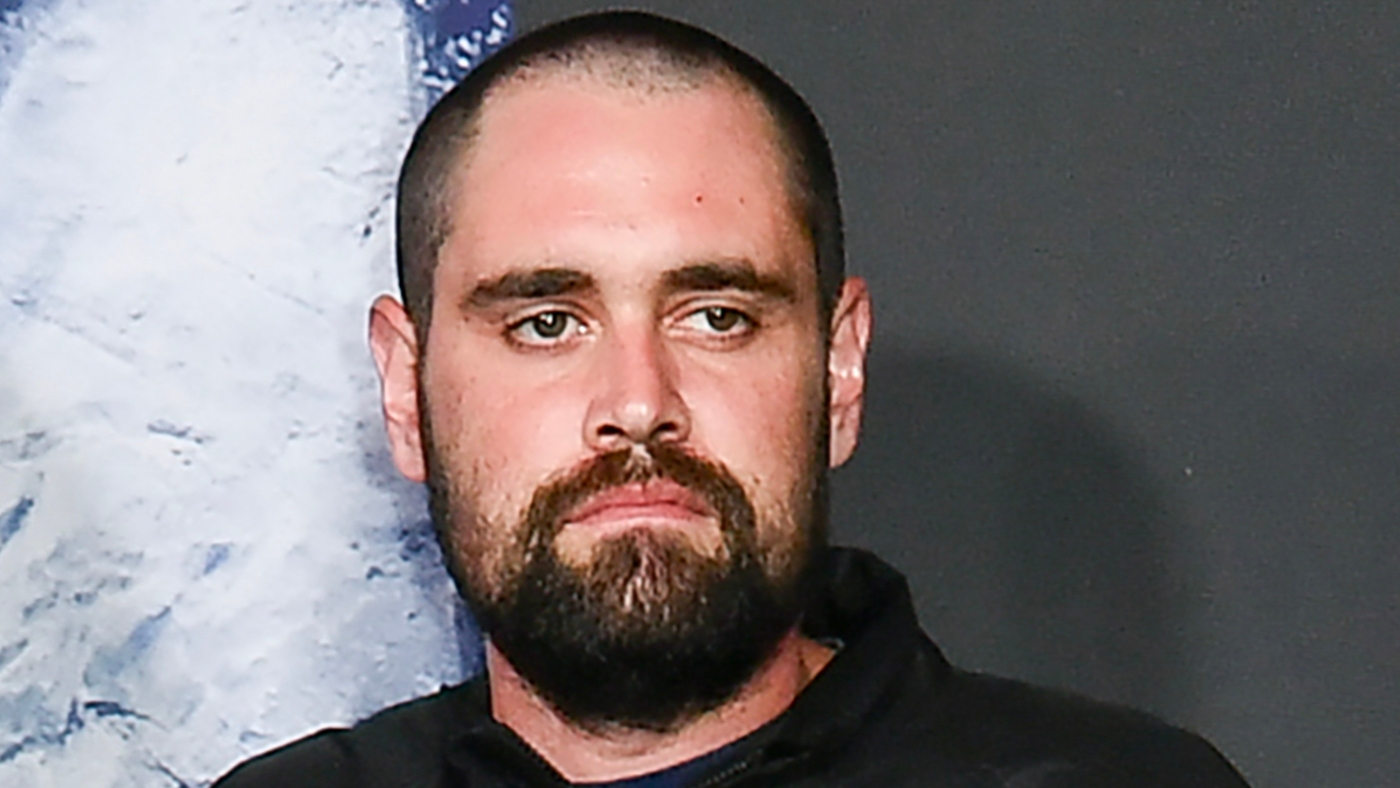Culture
How Angel City became 'the most valuable women’s sports team in the world'

On Wednesday, Angel City FC became “the most valuable women’s sports team in the world” after the club entered into a definitive agreement for Willow Bay and Bob Iger to become the new controlling owners.
The team’s board of directors unanimously approved the sale via a vote, but it still must be approved by the NWSL, the sport’s top women’s league in the United States. The sale is expected to close in the next 30 to 60 days.
Bay, dean of the Los Angeles-based USC Annenberg School for Communication and Journalism, and Iger, CEO of The Walt Disney Company, have acquired the controlling stake of the club at a total valuation of $250million (£192m), and have committed to an additional $50m in investment. Bay will serve as the club’s primary representative on the NWSL board of governors and also serve on and control Angel City’s board.
“We are so excited to be here,” Bay told The Athletic before the announcement. “I keep thinking how historic this moment is — historic in sports and in women’s sports. What we’re seeing now is breathtaking, and it’s only the beginning of the ascent, and that’s for women’s sports but particularly for this team.”
The dollar figures attached to the sale will make history.
According to Angel City’s official press release, the $250million enterprise valuation makes it “the most valuable women’s sports team in the world”. While there’s no official list, a $250m valuation outstrips the most valuable team in women’s basketball’s WNBA (the Las Vegas Aces at $140m, per Sportico, earlier this year) and the Women’s Super League in England (Chelsea has explored the sale of a minority stake in its women’s team with a total valuation around $200m).
Doug Emhoff, the second gentleman of the United States, recently visited Angel City’s practice facility to highlight the efforts of Kamala Harris, the U.S. vice president, to promote gender equality. He called the sale a “great statement” for the league.
“The fact that people like Bob Iger and Willow Bay are potentially investing in that team is a great statement about the health of the league and the prospects going forward, especially with the media,” Emhoff told The Athletic on Tuesday during the Olympics send-off game for the U.S. women’s national team.
Originally founded by actor Natalie Portman and entrepreneurs Kara Nortman and Julie Uhrman, the expansion team was the unexpected result of connections between Portman, Nortman and the USWNT players’ association via Time’s Up. The three brought on businessman Alexis Ohanian as the club’s largest shareholder and controlling owner before the team’s launch in 2020. Despite that title, Ohanian did not actually control the Angel City board, writing on social media that it was “one of many hard lessons (he) learned as a first-time sports team owner”.
For all the reporters who keep reaching out: when I bought the franchise to launch @weareangelcity in 2019, I didn’t setup board control for myself. (One of many hard lessons I learned as a first-time sports team owner). But as I’ve said from jump, I’m not selling any shares in…
— Alexis Ohanian 🇦🇲 (@alexisohanian) July 3, 2024
The club also added dozens of smaller investors, among them former USWNT players, including Abby Wambach, Mia Hamm, Julie Foudy and Lauren Holiday, as well as celebrities and other famous athletes, such as Billie Jean King, Jennifer Garner and Uzo Aduba.
Angel City has largely struggled on the field since starting play in 2022 — though they did make the 2023 NWSL playoffs before being knocked out in the first round — but the team has been a runaway success from a business perspective.
Wednesday’s $250million valuation is a massive step up from last year’s Sportico figures, which Angel City led at $180m, and the Los Angeles club laps the rest of the NWSL in revenue. It makes more than $30m a year, about double that of the next highest, fellow Californians San Diego Wave.
This year, Angel City’s four primary owners voted to hire New York investment bank Moelis & Company to find a new controlling owner, with that decision becoming public in March after reports of squabbling among the board. Four months later, the board collectively announced the club’s sale to Bay and Iger, but individual founding owners were not made available to the media.
“Willow and Bob bring unparalleled operational experience, expertise and passion to Angel City and the NWSL,” the club statement begins.
“They are the right partners to lead us into this new era — they are committed to strengthening Angel City’s position as a preeminent organization and brand in women’s sports and to championing the team’s broader mission, including the advancement of equity for athletes and women-founded businesses.
“With their leadership, we will continue to harness the industry’s momentum and build on Angel City’s strong foundation of fan and community support.”
Portman, Uhrman, Ohanian and another early investor and board member, Gillian Berry, will continue their roles on the board once the sale is completed. But Bay will soon be at the head of the table, along with Iger, hoping to advance the existing Angel City mission. Bay believes that the work ahead must be done as part of a local community, even as Angel City’s reach extends globally.
“We’re committed to doing whatever it requires — leveraging expertise, capital and our networks to continue building and elevating this franchise on and off the pitch,” Bay said on Tuesday
Natalie Portman, Julie Uhrman and Kara Nortman in 2023 (Allison Zaucha/Bloomberg via Getty Images)
When Angel City unveiled itself as a new NWSL expansion team four years ago, no one could have predicted that it would be up for a $250million sale, even with all the excitement of Hollywood connections, USWNT star power, and the anticipation for the return of women’s professional soccer to Los Angeles for the first time since 2010.
The team brought in forward Christen Press as their first signing, then pulled out all the stops for their home opener in May 2022, with a sold-out crowd of 22,000 watching them eke out a win over North Carolina Courage.
“What you see here (with Angel City) is a combination of so many people getting together and going, ‘No. It can be different. It can be this, don’t do that’. We can make this whatever we want,” Wambach said before that 2-1 victory.
That’s largely been the story of Angel City’s approach: leverage the knowledge and experiences of Wambach, Hamm and the rest across various former leagues — WUSA, WPS, even the early days of the NWSL — then combine it with the ambition of new investors who are bound by the historical fear of a league folding too soon. For the most part, it has worked — though not perfectly.
Chief among the criticisms of Angel City has been that the club has been more interested in building a brand than an actual soccer team. While most of the team’s early language has been scrubbed from its website, the business-centric theme is still present in the page description for its online store: “Angel City is not just another football club. We’re a brand on a mission to make a difference in this world. We’re born of the streets of Los Angeles and stand side-by-side with our community.”

Angel City’s Claire Emslie, left, celebrates her goal against NJ/NY Gotham in 2022 (Ira L Black – Corbis/Getty Images)
Since March, however, the team has been followed by reports of infighting on its board as it decided to find a new controlling owner.
The Los Angeles Times reported Ohanian was unhappy over the team’s spending. This week, The Wall Street Journal went in-depth on power struggles within Angel City’s leadership, primarily between Ohanian and Uhrman. According to that report, internal documents show team officials complained about Uhrman’s “financial and personnel management”, with Ohanian cited as having concerns over her spending, the hiring of her sister as a team executive, and her temperament.
The Wall Street Journal also reported there is disagreement over Uhrman continuing as the team’s president. That decision would fall to Bay as the new controlling owner, with Uhrman herself mentioning that in the Journal’s story. However, Wednesday’s confirmation that Uhrman (and Ohanian) will remain on the board following the sale’s closure shows she will still have some role with the team moving forward.
Still, there was always going to be incredible interest in the club’s controlling stake thanks to the growth of Angel City, the NWSL and women’s sports as a whole.
Angel City had the NWSL’s highest attendance in 2022, was barely off San Diego Wave’s pace the following year, and leads the league again in 2024. According to the club, they also top the league in season ticket membership and sponsorship revenue.
“We’re going to be the first women’s team to have a billion-dollar valuation in five years,” Uhrman told The Athletic last year. “There’s no better investment today than women’s sports.”
On the league front, when Angel City was still building its ownership group in 2019, team valuations had not yet exploded. In December of that year, OL Groupe bought out Seattle Reign for just $3.5million. Last month, when a group led by Seattle Sounders of MLS and investment firm Carlyle finalized its purchase of the Reign from OL Groupe, it was for $58m. Just before the Angel City news broke in March about the search for a new controlling owner, San Diego Wave sold for $120m.
Valuations can’t be viewed in a vacuum, however, with media rights, facilities, attendance and other metrics weighing in. The NWSL has enjoyed good news on those fronts, too, whether it’s the purpose-built stadium in Kansas City, last year’s media-rights deals, or increases in attendance and engagement figures in 2024.
Women’s sports, in general, are having an extended moment.
Global financial company Deloitte had to revise its initial predictions on women’s sports revenue, predicting that 2024 would be the year that it would surpass $1 billion. North America is expected to account for 52 percent of that revenue, with soccer’s revenue forecast figure ($555m) the highest among all sports.
It is not surprising that there were interested bidders, though a representative of Bay’s declined to comment on other bids or the bidding process itself. Marc Lasry, former owner of the NBA’s Milwaukee Bucks and CEO of Avenue Capital Group, as well as Avram Glazer, part owner of the Premier League’s Manchester United and the NFL’s Tampa Bay Buccaneers, were linked as potential bidders, with sources confirming to The Athletic this month that Glazer had pursued Angel City’s controlling interest.
The Bay-Iger bid emerged as the favorite this month, with the deal already close to completion.
It is easy to assume that Angel City — a product of the connections formed between women — would want a woman as its controlling owner, they could do one step better: someone who had been a fan since day one.
“The team has been on our radar since its inception,” Bay said, calling herself and Iger, her husband, members of the Angel City community — but she also knew two of the founding investors, Uhrman and Nortman, so she took particular interest in their new project. Bay and Iger have attended games, but Bay has gone further and included Angel City in her role as a professor at the University of Southern California.
“I bring students as part of my sports class to visit Angel City, to learn about the trajectory of the team and its development,” she said, adding she has also hosted the team’s co-founders on campus. “It’s important to offer a platform to this team, part of this community, and these women who have helped create it.”
Bay, who has a lengthy media and journalism resume that spans Huffington Post, Good Morning America, Moneyline, the Today Show and NBA Inside Stuff, loves a narrative.
“This is a great business story, a great sports story, a great community story, and certainly a great story about driving equity with a purpose-driven brand,” she said. “So for all those reasons, I’ve followed this team since the beginning.”
Asked about changing her mindset from fan to owner, Bay didn’t want to get into too many specifics about the club’s new day-to-day. To her, there is time ahead to dig into priorities, strategic planning and the decisions that have to be made. The sale is a month or two from being finalized, and she’s still embracing the moment to celebrate. Bay is in big-picture mode, not the nitty-gritty logistics.

Bob Iger and Willow Bay at the Academy Awards in March (Jeff Kravitz/FilmMagic)
That said, the purchase of Angel City has repercussions beyond just the club. Bay will be one of 15 (eventually 16, once the next expansion team is chosen) governors who can help shape the league’s future.
“There have never been limits for this team,” Bay said. “That also applies to the NWSL, with this new infusion of energy, capital resources, and incredible people joining this ownership group. There are certainly no limits to what we can expect from these athletes.”
One of those athletes, Press, addressed the player side of the sale, acknowledging that the team does have “a lot of things that they need to get right”. The deal — plus that extra $50million of investment — means a lot of money is about to flow in.
“It allows the club to continue to professionalize. Angel City recognizes that they have a lot of room to grow on that end,” Press told The Athletic this month.

Angel City’s Christen Press in 2022 (Katelyn Mulcahy/Getty Images)
While Bay promised the specifics of priorities would come later, she did say that facilities are absolutely on the list, “particularly with player development and player support”.
That’s not new information. The Bay-Iger group’s pitch deck, acquired by news website Semafor, shows that the group wants to “improve team performance, player support and retention”, which does include a training facility — but Bay and Iger also offer their expertise on media, content creation, and managing brands.
A pitch deck is one thing, reality can be another. Bay, unsurprisingly, said the first couple of months once the sale closes will be filled with a lot of listening.
“It’s premature to even speculate about where we land first and what we do first, but we’re committed to listening, understanding where the opportunities are, then making decisions about how to prioritize resources,” she said. Player support and development across the board, including players, technical staff and front office staff, are areas they have already circled.
As of Wednesday, they’re one step closer to the real work ahead.
(Top photo: Angel City in recent action against visitors San Diego Wave; Ronald Martinez/Getty Images)

Culture
Do You Know the Notable Buildings Mentioned in These Books?

A strong sense of place can deeply influence a story, and in some cases, the setting can even feel like a character itself. This week’s literary geography quiz highlights buildings that inspired authors, often to the point of including the structures in their novels. (Many of the buildings are still open to visitors.) To play, just make your selection in the multiple-choice list and the correct answer will be revealed. At the end of the quiz, you’ll find links to the books if you’d like to do further reading.
Culture
Video: 250 Years of Jane Austen, in Objects

new video loaded: 250 Years of Jane Austen, in Objects
By Jennifer Harlan, Sadie Stein, Claire Hogan, Laura Salaberry and Edward Vega
December 18, 2025
Culture
Try This Quiz and See How Much You Know About Jane Austen

“Window seat with garden view / A perfect nook to read a book / I’m lost in my Jane Austen…” sings Kristin Chenoweth in “The Girl in 14G” — what could be more ideal? Well, perhaps showing off your literary knowledge and getting a perfect score on this week’s super-size Book Review Quiz Bowl honoring the life, work and global influence of Jane Austen, who turns 250 today. In the 12 questions below, tap or click your answers to the questions. And no matter how you do, scroll on to the end, where you’ll find links to free e-book versions of her novels — and more.
-

 News1 week ago
News1 week agoFor those who help the poor, 2025 goes down as a year of chaos
-

 Detroit, MI4 days ago
Detroit, MI4 days ago2 hospitalized after shooting on Lodge Freeway in Detroit
-
Georgia1 week ago
Best in Georgia: 2025 AJC Varsity high school football all-state teams
-

 Dallas, TX3 days ago
Dallas, TX3 days agoDefensive coordinator candidates who could improve Cowboys’ brutal secondary in 2026
-

 Detroit, MI1 week ago
Detroit, MI1 week agoWith 46k outages around Michigan, Metro Detroit prepares for power loss
-

 Southeast1 week ago
Southeast1 week agoMurder in small-town America: The crimes that tore quiet communities apart in 2025
-

 Miami, FL1 week ago
Miami, FL1 week agoMiami-Dade sheriff’s deputy opens fire on vehicle after altercation during traffic stop, officials say
-

 Midwest1 week ago
Midwest1 week agoMcDonald’s locks doors to keep out individuals who present ‘a risk’ in crime-ridden Minneapolis area






















